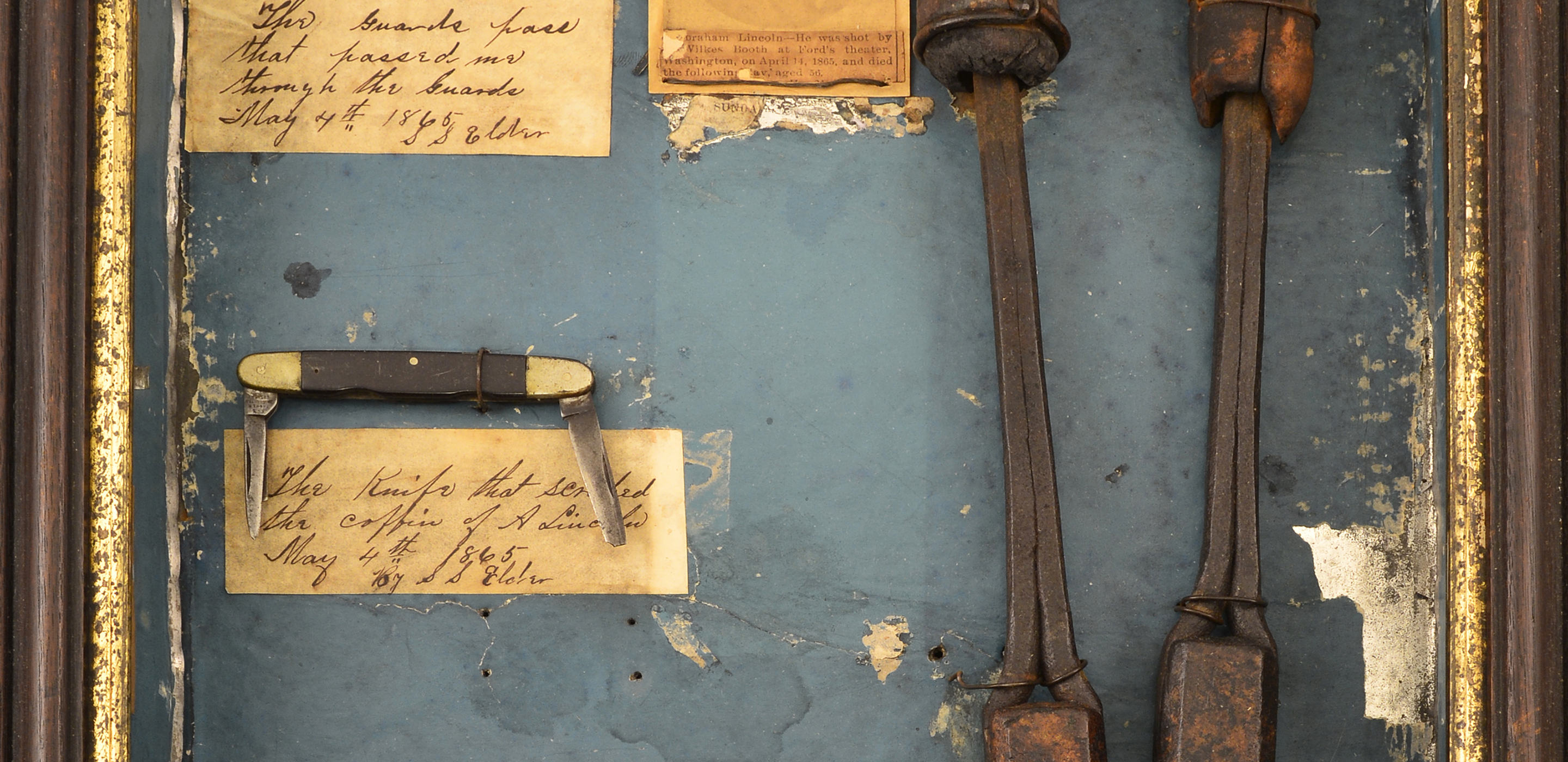
Coffin Tools & Frame
S.S. Elder, a welder in Springfield, Illinois, was given the duty of sealing President Abraham Lincoln’s coffin before his burial on May 4, 1865.
S.S. Elder saved each tool he used to perform the task, eventually preserving them permanently in a shadow box. His carefully handwritten labels describing each tool and document his role in Lincoln’s funeral.
Elder was one of the millions of Americans who realized they were witnessing a unique moment in history. Thousands of people who paid their respects to Lincoln as his funeral train wound its way from Washington, D.C., to Springfield, Illinois, saved ribbons, pins or other mementos from their brush with history.
Examine the Evidence: What might Elder say to us today as we look upon his tools? What would you want to ask him and others who lived through this time?
S.S. Elder’s Soldering Tools
The Springfield welder who sealed Lincoln’s coffin preserved his tools afterwards, knowing they would be part of history.
Protect Our History
The night of April 14, 1865, forever changed our national history. Together, Ford's Theatre Society and the National Park Service partner to protect the artifacts from that night. Through these objects, we can better understand how that single event transformed our nation. Give to Ford's Theatre to help continue sharing the stories that shaped a nation.
